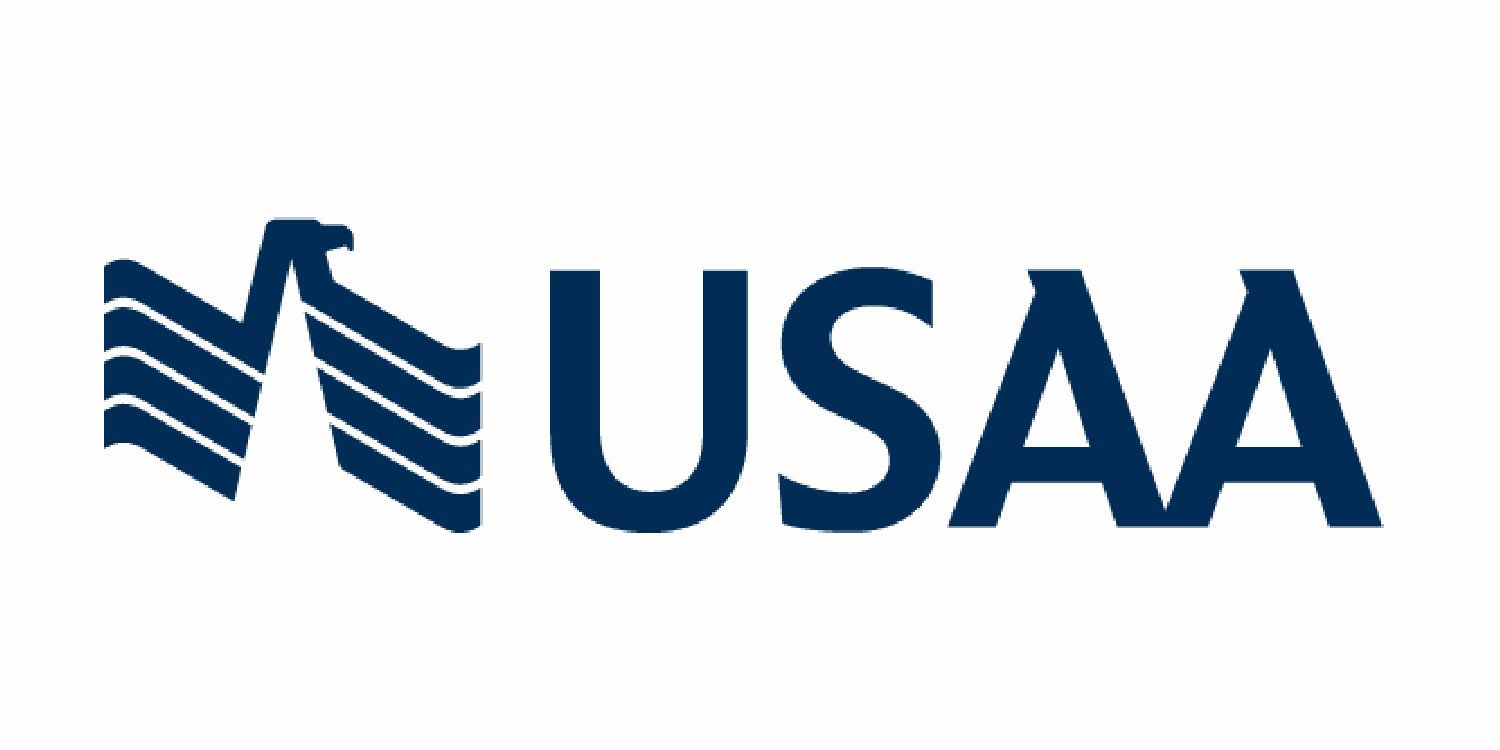

Finance
What Is Subrogation In Insurance?
Published: November 17, 2023
Discover the role of subrogation in insurance and how it impacts your finances. Uncover the benefits and implications of this crucial financial process.
(Many of the links in this article redirect to a specific reviewed product. Your purchase of these products through affiliate links helps to generate commission for LiveWell, at no extra cost. Learn more)
Table of Contents
Introduction
When it comes to insurance, most people are familiar with the concept of making a claim to recover losses or damages. However, there is another important aspect of insurance that often goes unnoticed – subrogation. Subrogation is a legal process that allows insurance companies to recover the expenses they have paid out to their policyholders by pursuing a claim against a third party responsible for the loss or damage.
Subrogation plays a crucial role in the insurance industry, as it helps to maintain fairness and prevent fraud. It allows insurers to recoup the money they have paid out for claims, ensuring that the responsible party bears the financial consequences of their actions or negligence. Without subrogation, insurance premiums would skyrocket, and innocent policyholders would end up shouldering the burden of another party’s wrongdoing.
In this article, we will delve into the concept of subrogation in insurance and explore how it works. We will also look at the different types of subrogation, the parties involved, and its benefits and limitations in the insurance industry. Additionally, we will discuss the difference between subrogation and indemnification and provide real-life examples of subrogation cases.
By gaining a better understanding of subrogation, you will be able to appreciate its significance in the insurance world and how it contributes to maintaining a balanced and equitable system for all policyholders.
Definition of Subrogation
Subrogation, in the context of insurance, refers to the legal right of an insurance company to step into the shoes of its policyholder and seek reimbursement from a responsible third party. It allows the insurer to recover the money it has paid out to its policyholder as a result of a covered loss or damage.
When an insured individual or entity suffers a loss covered by their insurance policy and the insurer reimburses them for the damages, the insurance company is effectively subrogated to the rights of the insured. This means that the insurer can pursue a claim against the party responsible for the loss or damage and attempt to recover the money it has paid out.
The principle underlying subrogation is based on the idea of preventing the insured from receiving a double recovery. It ensures that the party responsible for the loss bears the financial responsibility instead of the innocent policyholder or their insurer. Subrogation helps to maintain fairness in the insurance industry and discourages fraudulent activities by holding accountable those who caused the loss or are legally liable for it.
It is important to note that subrogation is not limited to property and casualty insurance. In the field of health insurance, for example, subrogation may occur when the insurance company pays the medical expenses of its policyholder resulting from an accident caused by a third party. In such cases, the insurer may seek reimbursement from the responsible party’s liability insurance.
The process of subrogation is typically based on the terms and conditions outlined in the insurance policy. These policies often include clauses that grant the insurer the right to pursue subrogation and outline the procedures and timeframes involved in initiating a subrogation claim.
How Subrogation Works
Subrogation involves a series of steps that insurance companies follow to recover the expenses they have paid out to their policyholders. Although the specific process may vary depending on the insurance policy and the circumstances of the claim, the general steps of subrogation are as follows:
- Payment of the claim: When a policyholder experiences a covered loss or damage and files a claim, the insurance company evaluates the claim and, if approved, issues payment to the policyholder to cover the losses. This payment may include expenses such as repairs, medical bills, or property replacements.
- Identification of potential third-party liability: After paying the claim, the insurance company will investigate the circumstances surrounding the loss to determine if there is a responsible third party who can be held liable for the damages. This could be an individual, a business, or another entity.
- Notification and demand: Once a potential liable party is identified, the insurance company will notify them of the claim and provide a demand for reimbursement. The demand includes the details of the claim, the amount paid by the insurer, and any supporting evidence.
- Negotiation or legal action: Depending on the response of the liable party, the insurance company may engage in negotiations to reach a settlement. If an agreement cannot be reached, the insurer may initiate legal action to recover the expenses through a lawsuit.
- Recovery of funds: If the negotiations are successful or the court rules in favor of the insurance company, the liable party will be required to reimburse the insurer for the expenses paid out to the policyholder. The recovered funds are then used to offset the costs incurred by the insurance company.
It is important to note that subrogation is typically pursued when the potential recovery exceeds the costs involved in pursuing the claim. Insurance companies carefully evaluate the feasibility of subrogation based on the likelihood of success and the potential financial benefit.
Furthermore, the insurance company must act promptly when pursuing subrogation to ensure that all legal deadlines and timeframes are met. This helps to avoid any potential waiving of rights due to delays or failure to comply with legal requirements.
Overall, the process of subrogation requires careful investigation, communication with the responsible party, and potentially legal action. It is a complex yet essential aspect of the insurance industry that enables insurers to recoup the funds they have paid out and maintain the financial balance within the system.
Parties Involved in Subrogation
Subrogation involves several parties with distinct roles and responsibilities. Understanding the roles of each party can help clarify how subrogation works. The main parties involved in the subrogation process are:
- Insurance Company: Also known as the insurer, the insurance company provides coverage to policyholders and pays claims when a covered loss occurs. In the context of subrogation, the insurance company has the right to pursue reimbursement from a liable third party to recover the expenses it has paid out.
- Policyholder: The policyholder is the individual or entity that has purchased an insurance policy from the insurer. When the policyholder experiences a loss covered by the insurance policy, they file a claim with the insurance company to receive compensation for the damages. The policyholder’s rights are effectively transferred to the insurance company during the subrogation process.
- Third Party: The third party refers to the individual, business, or entity that is responsible for the loss or damage suffered by the policyholder. This could be another driver in a car accident, a manufacturer of a defective product, or a negligent property owner, among others. The third party may be held legally liable for the damages and is the target of the subrogation claim.
- Legal Counsel: In some cases, insurance companies may enlist the services of legal professionals specializing in subrogation to assist with the process. Lawyers experienced in subrogation laws and procedures can help insurers navigate the complexities of the legal system and negotiate settlements with the responsible party.
- Claims Adjuster: The claims adjuster is an employee of the insurance company who evaluates and investigates the claim filed by the policyholder. They assess the damages, gather supporting evidence, and make a determination regarding the coverage and amount of compensation to be paid to the policyholder. Claims adjusters also play a role in identifying potential third-party liability and initiating the subrogation process.
These parties work together throughout the subrogation process to ensure that the insurance company recovers its expenses and the responsible party is held accountable for the damages. Effective communication, thorough investigation, and legal expertise are crucial in achieving a successful subrogation outcome.
Types of Subrogation
Subrogation can be classified into various types based on the circumstances and nature of the claim. Understanding the different types of subrogation can help insurers determine the appropriate approach to pursue reimbursement. The main types of subrogation include:
- Auto Subrogation: Auto subrogation occurs when an insurance company seeks reimbursement for damages and expenses paid to their policyholder resulting from a car accident caused by another driver. The insurer may pursue subrogation against the at-fault driver or their insurance company. Auto subrogation is a common type of subrogation due to the frequency of car accidents and the potential liability of other drivers.
- Property Subrogation: Property subrogation involves seeking reimbursement for damages paid out on property insurance claims. This could include damages caused by fire, water, natural disasters, or other covered perils. The insurance company may subrogate against a responsible party, such as a negligent contractor, manufacturer, or property owner, depending on the circumstances of the loss.
- Workers’ Compensation Subrogation: Workers’ compensation subrogation arises when an employee is injured on the job and receives compensation from their employer’s workers’ compensation insurance. If the injury was caused by a third party, such as the negligence of a contractor or a defective product, the workers’ compensation insurer may seek reimbursement from the responsible third party.
- Health Insurance Subrogation: Health insurance subrogation occurs when a health insurer seeks reimbursement for medical expenses it has paid on behalf of its insured due to injuries caused by a third party. For example, if an insured individual is injured in a car accident, the health insurance company may pursue subrogation against the at-fault driver’s auto insurance policy to recover the medical expenses.
It is worth noting that these are just a few common examples of subrogation types in the insurance industry. Subrogation can also arise in other areas, such as marine insurance, professional liability insurance, and more. The specific type of subrogation depends on the policy coverage, the nature of the loss, and the applicable laws and regulations.
Insurance companies carefully review the circumstances of each claim to determine the appropriate type of subrogation to pursue. By understanding the specific type of subrogation involved, insurers can formulate the most effective strategy to recover their expenses and ensure a fair outcome for all parties involved.
Benefits and Importance of Subrogation in Insurance
Subrogation plays a vital role in the insurance industry, offering several benefits and serving as an essential mechanism for maintaining balance and fairness. Here are some key advantages and the importance of subrogation in insurance:
- Cost Recovery: One of the primary benefits of subrogation is the ability for insurance companies to recover the expenses they have paid out to their policyholders. By pursuing reimbursement from responsible third parties, insurers mitigate potential losses and maintain financial stability. This helps prevent premium increases for policyholders and ensures that the party responsible for the loss bears the financial burden.
- Fraud Deterrence: Subrogation acts as a deterrent against fraudulent activities, reducing the likelihood of individuals or entities taking advantage of insurance coverage. Knowing that insurers will actively seek reimbursement from those responsible for the loss discourages fraudulent claims and promotes honesty and integrity in the insurance industry.
- Fairness and Equity: Subrogation contributes to fairness and equity within the insurance system. Without subrogation, innocent policyholders would bear the consequences of other parties’ wrongdoings, leading to increased premiums for all. Subrogation ensures that those who cause the loss or are legally liable for it are held accountable financially, promoting a balanced and equitable distribution of costs.
- Reduced Litigation Expenses: Subrogation can help reduce the costs associated with legal disputes. Instead of the insurance company and the responsible party engaging in separate legal proceedings, subrogation streamlines the process by allowing insurers to handle the recovery on behalf of their policyholders. This can save time, resources, and money for both parties involved, resulting in a more efficient resolution of the claim.
- Lower Insurance Premiums: The successful recovery of subrogation claims helps mitigate the financial impact on insurance companies, which can ultimately lead to lower premiums for policyholders. By recovering their expenses, insurers can maintain a healthy financial position, ensuring competitive pricing and affordable coverage options for their insured individuals and businesses.
Overall, subrogation is a critical component of the insurance industry. It protects the interests of policyholders, discourages fraudulent activities, and promotes fairness and financial stability. Through subrogation, insurance companies can efficiently recover their expenses, reduce overall costs, and maintain a balanced and sustainable insurance system for the benefit of all policyholders.
Challenges and Limitations of Subrogation
While subrogation provides significant benefits to insurance companies and policyholders, it also presents some challenges and limitations. Understanding these challenges is essential for insurers when navigating the subrogation process. Here are some of the key challenges and limitations of subrogation:
- Complexity of Legal Processes: Subrogation involves legal procedures and requirements that vary depending on the jurisdiction and the specific circumstances of the claim. The complexity of legal processes can pose challenges for insurance companies, particularly if they lack the resources or expertise to navigate the legal system effectively. Engaging legal counsel experienced in subrogation can help overcome these challenges.
- Collection of Evidence: Subrogation relies heavily on the collection of evidence to establish liability and support the insurer’s claim for reimbursement. However, gathering evidence can be challenging, especially if there is limited documentation or if the responsible party disputes their liability. Insurers may face difficulties in obtaining the necessary evidence to prove their case, potentially impacting the success of the subrogation claim.
- Insufficient Insurance Coverage: In some cases, the responsible party may have insufficient insurance coverage or no insurance at all, making it challenging for the insurance company to recover their costs through subrogation. Even if the insurer successfully pursues a claim, they may only be able to recover a portion of the amount paid out, leaving a gap in their financial recovery.
- Statute of Limitations: The statute of limitations sets a timeframe within which a subrogation claim must be filed. Failing to adhere to these time limits can result in the loss of the right to pursue subrogation. Insurance companies must be aware of these time constraints and act promptly to initiate the subrogation process to avoid potential issues related to the statute of limitations.
- Coordination with Multiple Parties: Subrogation often involves coordinating with multiple parties, including the policyholder, the responsible third party, and their respective insurance companies. The process can become challenging if there are delays in communication, disputes over liability, or difficulties in reaching a settlement agreement. Effective communication and negotiation skills are essential to overcome these challenges.
While the challenges and limitations of subrogation exist, insurance companies can mitigate these issues through careful planning, efficient processes, and expertise in subrogation practices. By proactively addressing these challenges, insurers can enhance their chances of successful subrogation and maximize their recovery potential.
Subrogation vs. Indemnification
Subrogation and indemnification are two distinct concepts in the insurance industry that have different implications for policyholders and insurance companies. While both can involve the reimbursement of losses, understanding the differences between subrogation and indemnification is crucial. Here’s a comparison of subrogation and indemnification:
Subrogation:
Subrogation refers to the legal right of an insurance company to step into the shoes of its policyholder after paying a claim and seek reimbursement from a liable third party responsible for the loss or damage. In subrogation, the insurance company seeks to recover the expenses it has paid out, thereby minimizing its own financial losses.
The key characteristics of subrogation are:
- The insurance company has the right to pursue reimbursement from the responsible party.
- The insurance company takes over the policyholder’s rights and can sue on their behalf.
- Subrogation aims to prevent the policyholder from receiving a double recovery.
- The insurance company seeks to recover the expenses it has paid out for the claim.
- Subrogation typically requires the insurance company to prove the liability of the responsible party.
Indemnification:
Indemnification, on the other hand, involves the insurer providing compensation or coverage for losses incurred by the policyholder. Indemnification is the act of making the policyholder whole by reimbursing them for their losses, up to the policy limits and subject to any deductibles or exclusions outlined in the insurance contract.
The key characteristics of indemnification are:
- The insurance company compensates the policyholder for their losses.
- Indemnification aims to restore the policyholder to the financial position they were in prior to the covered loss.
- The insurance company pays the policyholder based on the terms and conditions of the insurance policy.
- Indemnification does not involve pursuing reimbursement from a liable third party.
- The insurance company does not have the right to sue the responsible party on behalf of the policyholder.
Indemnification and subrogation are distinct processes within the insurance industry. Indemnification focuses on compensating the policyholder for their losses, while subrogation enables the insurance company to recover its expenses by pursuing reimbursement from the responsible party. Both concepts work in tandem to ensure a fair and balanced system, where the policyholder is adequately compensated, and the responsible party is held accountable for their actions or negligence.
Examples of Subrogation Cases
Subrogation cases occur in various scenarios where an insurance company seeks reimbursement for expenses paid out to their policyholder. Here are a few examples of subrogation cases:
- Car Accident: A policyholder’s car is severely damaged in a collision caused by another driver. The insurance company pays for the repairs under the policy’s collision coverage. The insurance company may then pursue subrogation against the at-fault driver to recover the funds spent on repairing the policyholder’s vehicle.
- Product Liability: A policyholder suffers injuries and property damage due to a defectively manufactured product. The insurance company pays for the policyholder’s medical expenses and property repairs under their liability coverage. Subsequently, the insurer may initiate subrogation against the manufacturer or distributor of the product to recover the costs incurred by compensating the policyholder.
- Property Fire: A policyholder’s home sustains significant fire damage caused by a faulty electrical system. The insurance company pays for the repairs and temporary relocation expenses while the home is being restored. Subrogation may be pursued against the electrician or contractor responsible for the faulty wiring to recover the funds expended by the insurer for the policyholder’s claim.
- Marine Accident: A policyholder’s boat is involved in a collision with another vessel due to the negligence of the other boat’s operator. The insurance company covers the repairs to the policyholder’s boat and any bodily injuries suffered by the policyholder. In this case, the insurer may pursue subrogation against the negligent boat operator or their insurance company to seek reimbursement for the costs incurred.
- Workers’ Compensation: An employee is injured on the job due to the negligence of a third-party contractor. The workers’ compensation insurer provides medical and wage replacement benefits to the employee. The insurer may then pursue subrogation against the negligent contractor to recover the funds paid out for the employee’s benefits.
These examples illustrate how subrogation applies to different types of insurance claims. In each case, the insurer steps into the shoes of the policyholder to seek reimbursement from a responsible third party. Subrogation allows the insurance company to recover the expenses it has paid out, ensuring that the responsible party bears the financial consequences of their actions.
It is important to note that the success of subrogation cases relies on the evidence gathered, the strength of the legal arguments presented, and the cooperation of the responsible party or their insurance company. Insurance companies carefully evaluate each case to determine the likelihood of a successful subrogation claim and the potential recovery of the expenses incurred.
Conclusion
Subrogation is a critical component of the insurance industry, allowing insurance companies to recover expenses paid out to policyholders by pursuing reimbursement from responsible third parties. It ensures fairness, prevents fraudulent activities, and reduces the financial burden on innocent policyholders.
Throughout this article, we have explored the definition and workings of subrogation, the parties involved, the types of subrogation, and its benefits and limitations. We also compared subrogation with indemnification to highlight the distinct roles they play in the insurance process.
Subrogation provides numerous advantages, including cost recovery, fraud deterrence, fairness, reduced litigation expenses, and lower insurance premiums for policyholders. However, it also presents challenges such as the complexity of legal processes, collection of evidence, and potential limitations in cases involving insufficient insurance coverage or statute of limitations issues.
By understanding subrogation and its importance, insurance companies can navigate the subrogation process effectively and maximize their recovery potential. It is crucial for insurers to engage in prompt and thorough investigations, communicate effectively with all parties involved, and be aware of the legal requirements and time limits to ensure successful subrogation outcomes.
Ultimately, subrogation plays a crucial role in maintaining a balanced and equitable insurance system. It holds responsible parties accountable for their actions and helps insurance companies maintain financial stability, benefitting both the insurers and policyholders alike.
As the insurance industry continues to evolve, subrogation will remain a fundamental tool for ensuring the proper distribution of costs and promoting fairness. By embracing the principles and practices of subrogation, insurance companies can continue to provide valuable coverage and maintain the integrity of the industry.













